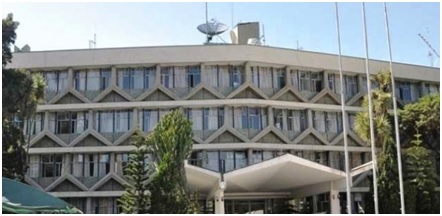Facts On Ethio-Sudan Boundary Issue (February 16, 2021)
Since last November 2020, the boundary issue has become an important subject in shaping the bilateral relations between Ethiopia and Sudan. As officially confirmed by Sudanese authorities, this was instigated following the military incursion of the Sudanese Army into Ethiopian territory. In this regard, the Sudanese authorities asserted that ‘Sudan has recovered its territory which has been occupied by Ethiopia for the last twenty-five years’. To avoid any confusion on the subject, it is necessary to correct the record and provide accurate information regarding the boundary between the two countries.
Sudan invaded land that is part of Ethiopia’s territory. In its indefensible conduct, the Sudanese Army demolished Ethiopian administrative institutions, overtaken military camps, killed and displaced residents, and destroyed their crops and property. Sudan acted in flagrant violation of international law against the use of force and the boundary re-demarcation treaties.
The boundary between Ethiopia and Sudan was delimited by the 1902 Treaty signed between Emperor Menelik II of Ethiopia and Great Britain, the then Colonial power of Sudan. The assertion by some Sudanese officials that Ethiopia is not accepting the border demarcation under the 1902 treaty is groundless.
While the Joint Commission consisting of Ethiopian and British representatives needed to demarcate the boundary line as envisaged under the 1902 Treaty, in 1903 a British surveyor, Major Gwynn, unilaterally demarcated the boundary. The Surveyor acted in the absence of Ethiopia’s representatives and without the authorization of the Ethiopian Government. Moreover, Major Gwynn disregarded the 1902 Treaty and made discretionary adjustments to the treaty line. As a result, the Ethiopian Government rejected Major Gwyn’s demarcation.
After Sudan gained its independence in 1956, Ethiopia and Sudan conducted series of consultations on the matter and adopted the 1972 Exchange of Notes. On this Exchange of Notes, Ethiopia and Sudan agreed to re-demarcate the boundary. They also agreed to use Major Gwynn’s demarcation as a basis for the joint work of re-demarcation. Evidently, Major Gwynn himself intended his work of demarcation to be a basis for future dealings between the two Governments.
One may ask the reason for Ethiopia’s basic acceptance of Major Gwynn’s in 1972 after sixty-nine years of rejection. In this connection, the most fundamental factor is the agreement between Ethiopia and Sudan to re-demarcate the boundary by rectifying the Gwynn demarcation. The rectifications are envisaged in two aspects. First, the Exchange of Notes rectify the boundary line of Major Gwyn’s demarcation South of Mount Dagleish to ‘run across the crest points rather than at the base of the hills of Halawa, Umdoga, El Mutan and mount Jerok’, which Major Gwynn, contrary to the 1902 Treaty included in the Sudanese territory. Second, the Exchange of Notes requires, prior to re-demarcation of the boundary, the study of the problem resulting from settlements and cultivation North of Mount Dagleish should be considered with the view to finding an amicable solution.
Therefore, the rectifications to the boundary line north of Mount Dagleish are to be jointly determined by the two countries.
Adjustment to Major Gwynn’s demarcation south of Mount Dagleish was made as reflected in the 1972 Exchange of Notes. For the sector of the boundary North of Mount Dagleish, the two countries agreed to establish a Joint Special Committee that would conduct field studies and propose an amicable solution. Accordingly, the Joint Special Committee was established in 2002 and so far conducted eight rounds of meetings and expected to submit a proposal containing an amicable solution.
It also needs to be underlined that, as per the 1972 Exchange of Note, both Ethiopians and Sudanese nationals cannot be displaced from their holdings. These holdings are registered by the Joint Select Working Group (JSWG) from March 2004 to January 2005. Ethiopia and Sudan agreed to maintain the status quo until the disposition of the case by agreement.
Therefore, the military incursion by the Sudanese army to the Ethiopian territory in the first week of November 2020 is illegal and provocative. First, it violates the basic international principle against the threat and use of force provided under Article 2 (4) of the UN Charter and pacific settlement of disputes stipulated under Article 33 of the UN Charter. Second, it undermines the Joint boundary mechanisms that are put in place and the progress made so far to discharge the task of the re-demarcation.
The Sudanese military incursion was carried following the redeployment of the Ethiopian National Defence Forces in the first week of November 2020 for law enforcement measures in the Tigray region. The Sudanese Army killed Ethiopians residing in the area, looted and destroyed their hard-earned assets, and generated fear and mayhem in the border area. Taking as an advantage the internal situation of a friendly country and close neighbor is deplorable and threatens the good neighborliness between the two countries. This unwarranted action of the Sudanese Army opened the room for suspicion and complicated the search for a peaceful and lasting solution to the boundary dispute.
Therefore, the aggression of the Sudanese Army needs to be reversed with the view to creating a conducive environment for the bilateral mechanisms to function. In the failure of Sudan to abide by international law and bilateral agreements Ethiopia reserves its right to self-defense as recognized under international law.
Ethiopia and Sudan enjoy a strategic partnership and deeply rooted relations in the fields of social, economic, security, economic, and several other areas. They also have concerted mechanisms to resolve the boundary problem. The invasion of the Sudanese army and military confrontation is only futile. Even if Ethiopia and Sudan resort to military confrontation, re-demarcation of the boundary will require discussion and diplomacy. Therefore, it would be unwise and against the will of the peoples of Ethiopia and Sudan to engage in an unnecessary war.
Source: MFA




Leave a Reply
Want to join the discussion?Feel free to contribute!